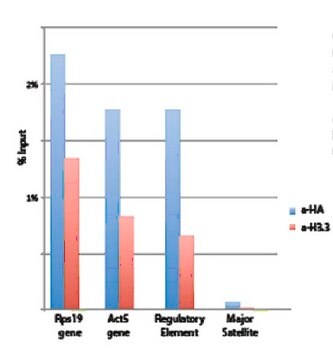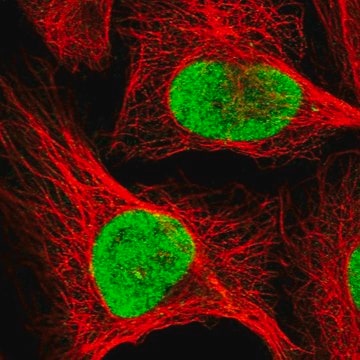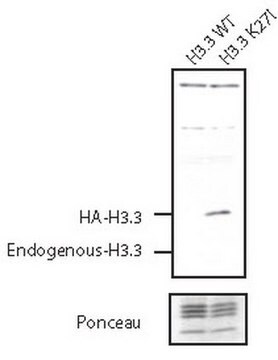ABE419
Anti-Histone H3.3 Antibody, K27M mutant
from rabbit, purified by affinity chromatography
Synonym(s):
Histone H3.1, Histone H3.3
About This Item
Recommended Products
biological source
rabbit
Quality Level
antibody form
affinity isolated antibody
antibody product type
primary antibodies
clone
polyclonal
purified by
affinity chromatography
species reactivity
mouse, human
technique(s)
ChIP: suitable
immunohistochemistry: suitable
western blot: suitable
NCBI accession no.
UniProt accession no.
shipped in
wet ice
target post-translational modification
mutation (Lys27Met)
Gene Information
human ... H3F3B(3021)
General description
Specificity
Immunogen
Application
- Peptide Inhibition Assay (PIA): Target band detection inlysate from HEK-293 cells transfected with Histone H3.3 K27M mutant wasprevented by pre-blocking of a representative lot with the immunogen HistoneH3.3 K27M mutant peptide, but not the corresponding unmodified Histone H3.3 peptide.
- Immunohistochemistry (IHC): A representative lot of this antibodydetected Histone 3.3 K27M in pediatric glioblastoma tissue sections. (Venneti,S., et al. (2014). Acta Neuropathol 128(5); 743-753).
Epigenetics & Nuclear Function
Histones
Quality
Western Blotting Analysis (WB): A 1:2,000 dilution of a representative lot of thisantibody detected Histone H3.3 K27M in HEK-293 cells transfected with HistoneH3.3 K27M mutant.
Target description
Physical form
Storage and Stability
Analysis Note
Lysates from MEF transfectants expressing K27M (positive) or wildtype (negative) FLAG-HA-tagged histone H3.3.
Other Notes
Disclaimer
Not finding the right product?
Try our Product Selector Tool.
Storage Class
12 - Non Combustible Liquids
wgk_germany
WGK 1
flash_point_f
Not applicable
flash_point_c
Not applicable
Certificates of Analysis (COA)
Search for Certificates of Analysis (COA) by entering the products Lot/Batch Number. Lot and Batch Numbers can be found on a product’s label following the words ‘Lot’ or ‘Batch’.
Already Own This Product?
Find documentation for the products that you have recently purchased in the Document Library.
Our team of scientists has experience in all areas of research including Life Science, Material Science, Chemical Synthesis, Chromatography, Analytical and many others.
Contact Technical Service








